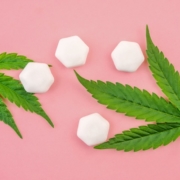A Comprehensive Guide To CBD Expiration
In order to get the best out of your CBD oil, how you store and take care of your products can have an impact on just how long your CBD lasts. If you are an avid CBD user, your product probably won’t make it to its expiration date, however, if you tend to buy your CBD in bulk, you may find that your CBD is past its best before date by the time you get to using it. So, whether you are a bulk buyer, regular user or casual partaker in CBD, this guide will outline so helpful tips on how to store your CBD to ensure it has a longer shelf life.
Does CBD have a shelf life?
In short, the answer is yes. Just like most food or drink products we consume; CBD also has a shelf life. The shelf life of most CBD products is 1-2 years depending on what your CBD oils made from. It can also depend on several other factors, such as its packaging, where it’s stored, how it’s made, and what your oil contains.
It’s worth noting that even high-quality CBD brands – particularly products made from hemp plant extracts containing natural plant material – will expire at some point. However, this doesn’t mean your CBD oil will go bad quickly, it’s just a good idea to check your CBD regularly for any signs that it may be “off”. (We’ll discuss this later).
5 things you need to know about CBD expiration
1. CBD oil breaks down in the air and direct sunlight
The majority of CBD products come in blue glass packaging, which aims to preserve the shelf life of products that are most sensitive to light.
In addition to the blue glass packaging, CBD products should always be stored away from direct light and heat to ensure the product doesn’t lose its potency. This is why experts suggest storing CBD in a medicine cabinet, or in a cupboard, to ensure your CBD lasts longer.
CBD products should also be stored in a dry place that is not exposed to the air, otherwise your products may oxidise or breed bacteria, thus damaging your product. Storing your CBD in airtight container is sometimes advisable.
2. CBD can be stored in the fridge to keep it fresh
If you live in a hot climate, CBD can be stored in the fridge to maintain freshness of the product when keeping CBD in a cool dry place and out of direct sunlight is more difficult. Depending on what type of oil your CBD oil is mixed with, you may find that the viscosity of the oil may appear thicker, but this is normal at colder temperatures and won’t affect the CBD itself.
3. CBD oil potency can change over time
Generally, the expiration date on your bottle of CBD is there as a guide to indicate when your product is past its prime – just like you’d get on food or drink. But remember, over time CBD will lose its potency. Depending on the way your CBD oil has been stored, the compounds found within the oil can convert into other compounds, resulting in cannabinoid potency being reduced.
Furthermore, the potency of the CBD product can be altered if stored poorly in heat, direct sunlight or after a long period of time. This is why it is vital to store your CBD in the correct location, to ensure it has a longer shelf life and is most effective.
4. Poor hygiene can make CBD oil expire quicker
If you use CBD for your pets, during cooking, or even putting it under your tongue, you must ensure you are practicing good hygiene. If the CBD oil dropper touches your mouth or the food and you put it back in the bottle, you run the risk of external contaminants and bacteria getting into your bottle. Food particles and saliva, in particular, can breed bacteria and make your CBD products deteriorate in record time.
5. Full-spectrum CBD tends to expire faster
Full-spectrum CBD oils contain other natural hemp plant ingredients, which means they are prone to expire quicker than oils that are made from CBD isolate.
On the other hand, isolate CBD is made from a pure powdered form, which is then added to a “carrier oil”, which removes the natural hemp plant ingredients found in full-spectrum CBD and leaves the CBD compound.
Please note: This doesn’t mean that full-spectrum CBD is worse than CBD isolate because it has a short expiration period, it’s simply down to the manufacturing process. You should choose which type of CBD based upon their effects on your body and what you use CBD for.
How can you tell if your CBD has gone bad?
If you buy your CBD in bulk, you may need to keep an eye on the expiration date to make sure you aren’t taking CBD that has gone bad. Here are a few ways to tell if your CBD is still fresh and safe for consumption:
- Check the expiration date on the packaging
- Check the smell and colour
- Look out for a change in oil consistency
Whether you’re using natural CBD oil products that are full-spectrum or isolate CBD oil, you must ensure you are practicing good hygiene and care when using and storing your products. Like with any product, this will help to maintain the shelf life of your products and ensure you get the very best out of your products.
You may also like: What is the best way to take CBD?
Feature image credit: IRA_EVVA / Shutterstock





















